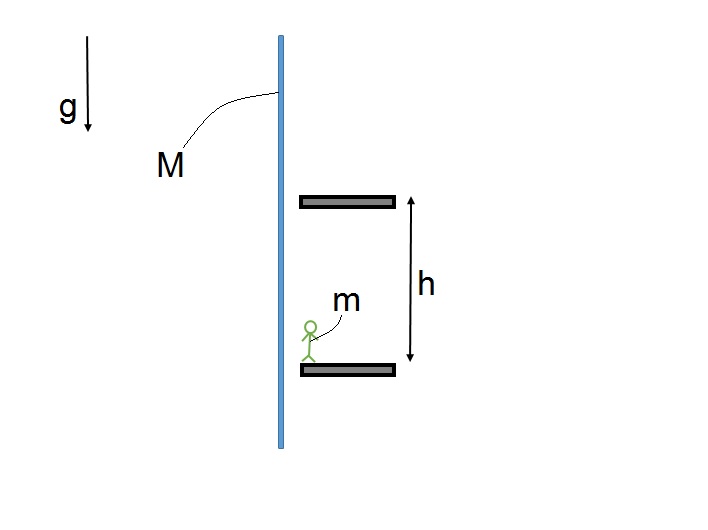I am a little confused about this question. I cannot imagine that it is possible to rise through a rope (assuming inextensible) that isn't fixed in its upper end. But when I solve this problem, I see that it is possible.
 If the person exerts downwards force of $F$ on the rope, according to the third law of Newton, the rope will exert a force by the same magnitude but in the opposite direction on the person. So, his acceleration ($a_m$) will be:
$$a_m=\frac Fm-a_M$$
That $a_M$ is the magnitude of the acceleration of the rope.
If the person exerts downwards force of $F$ on the rope, according to the third law of Newton, the rope will exert a force by the same magnitude but in the opposite direction on the person. So, his acceleration ($a_m$) will be:
$$a_m=\frac Fm-a_M$$
That $a_M$ is the magnitude of the acceleration of the rope.
On the other hand, we have: $$a_M=g+\frac FM$$ Thus, $$a_m=F\left(\frac 1m-\frac 1M\right)-g$$ Now, if $F\left(\frac 1m-\frac 1M\right)\ge g$, then $a_m\ge 0$ and this means that it is possible to rise through a free-falling rope.
But I suspect I am missing something (maybe because of overthinking!) because the upper end of the rope is free and I wonder if it is possible to rise!
